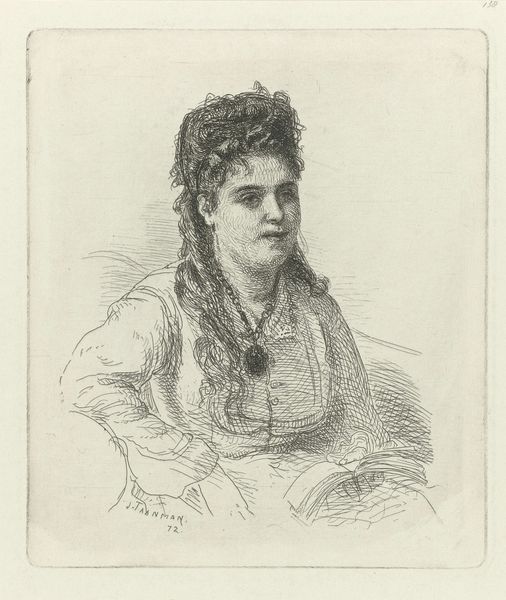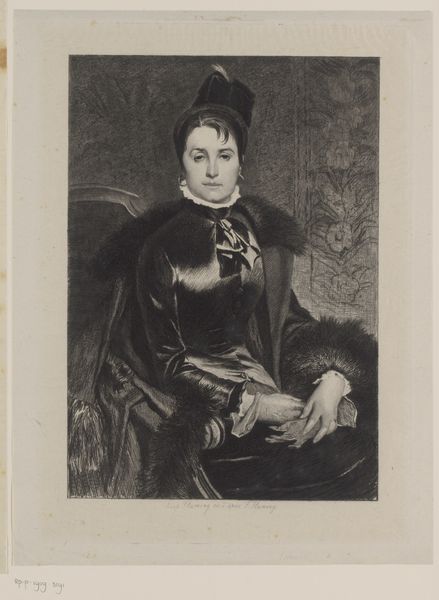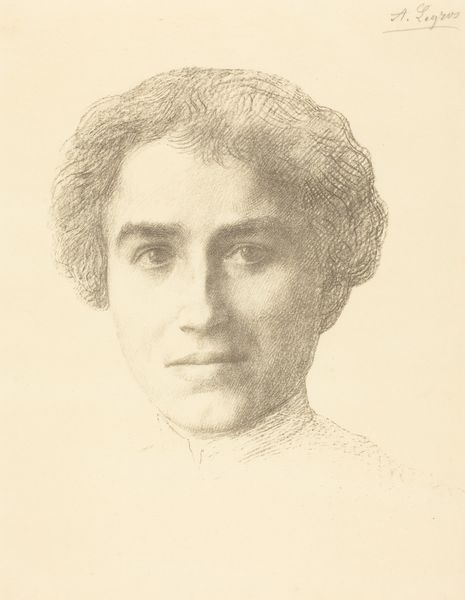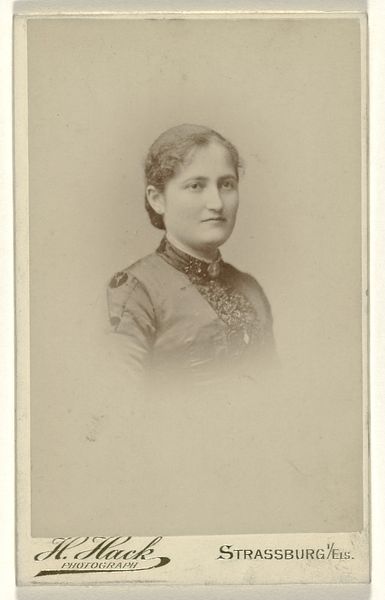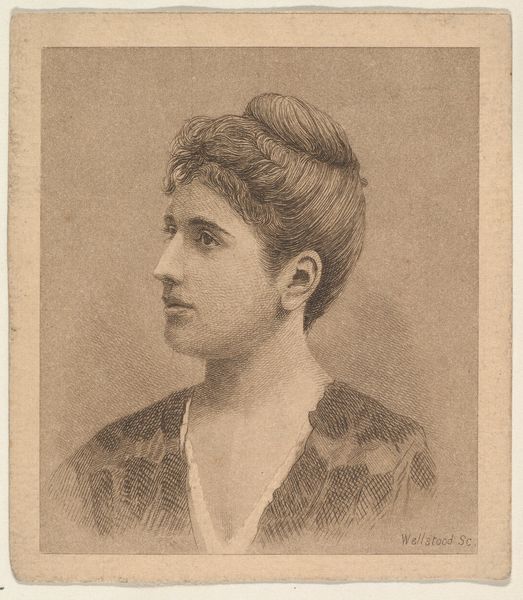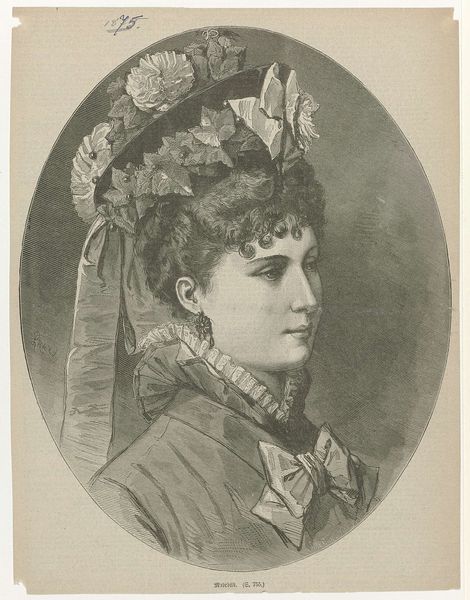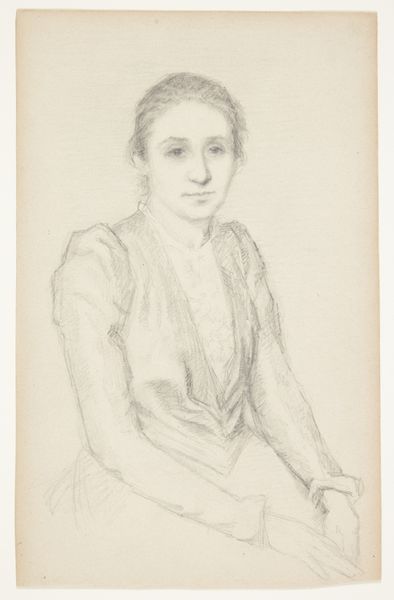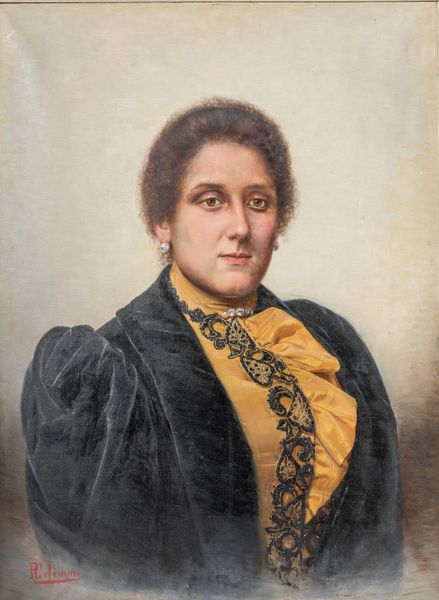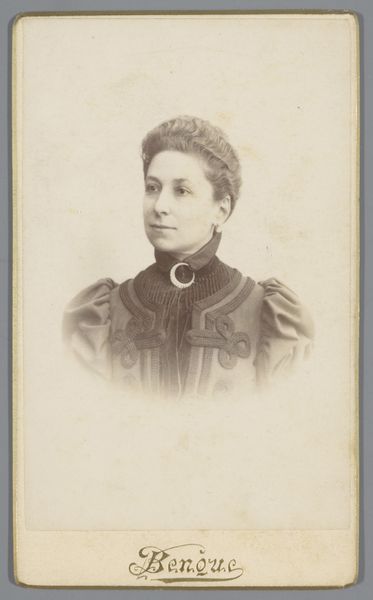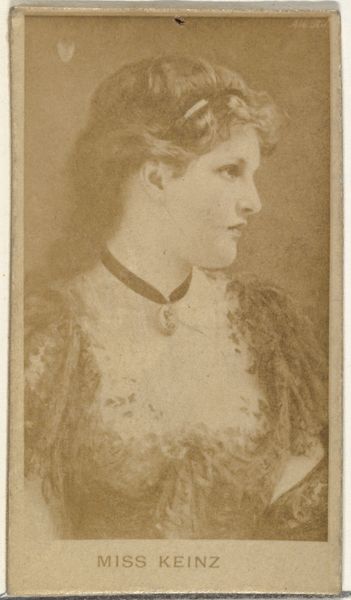
Dimensions: height 364 mm, width 284 mm
Copyright: Rijks Museum: Open Domain
Curator: Here we see Johan Henri Gustaaf Cohen Gosschalk’s “Portret van Meta Cohen Gosschalk” from 1897, rendered delicately in pencil. What strikes you first? Editor: The texture. It appears almost woven, like linen. Notice the precise, parallel strokes defining her dress and the background? Curator: Yes, an incredible level of detail using a seemingly simple medium. It's crucial to acknowledge the sitter—Meta, presumably connected to the artist, perhaps a relative—as more than just a subject. How does her identity influence our reading? Editor: Consider the time and context: late 19th century, a rising merchant class. The crispness of the drawing suggests a value placed on labor and precision – both qualities vital to commerce. Look closely; her garments may appear expensive, though their value is rendered only by careful mark making with an ordinary material. Curator: Precisely. The act of portraying Meta, the detail afforded to her visage and dress, signifies more than just representation, it’s an assertion of her status, particularly as women’s roles were shifting within societal structures. What are we to make of the lace? Editor: Lace production was grueling work during this period. The inclusion could signal appreciation, even recognition, for this specific type of skilled labor. Though not visible, its handmade production suggests specific class associations or allusions, despite its inclusion on this portrait of a seemingly wealthy woman. Curator: I concur; it speaks volumes about the artist’s considerations, as well as Meta’s awareness of how she is being framed within potentially shifting dynamics between femininity and burgeoning forms of capitalism. The Romantic style further complicates readings of the scene by further emphasizing themes of introspection and individualism within increasingly modern society. Editor: Examining both Meta's persona and the meticulous methods used in this portrait certainly raises awareness of the human condition and societal constructs behind its image. Thanks for that valuable historical insight! Curator: It is only through art such as this—and subsequent interpretations that invite ongoing considerations about historical legacies and gender and class relations—that viewers may expand knowledge and challenge present-day concerns.
Comments
No comments
Be the first to comment and join the conversation on the ultimate creative platform.
